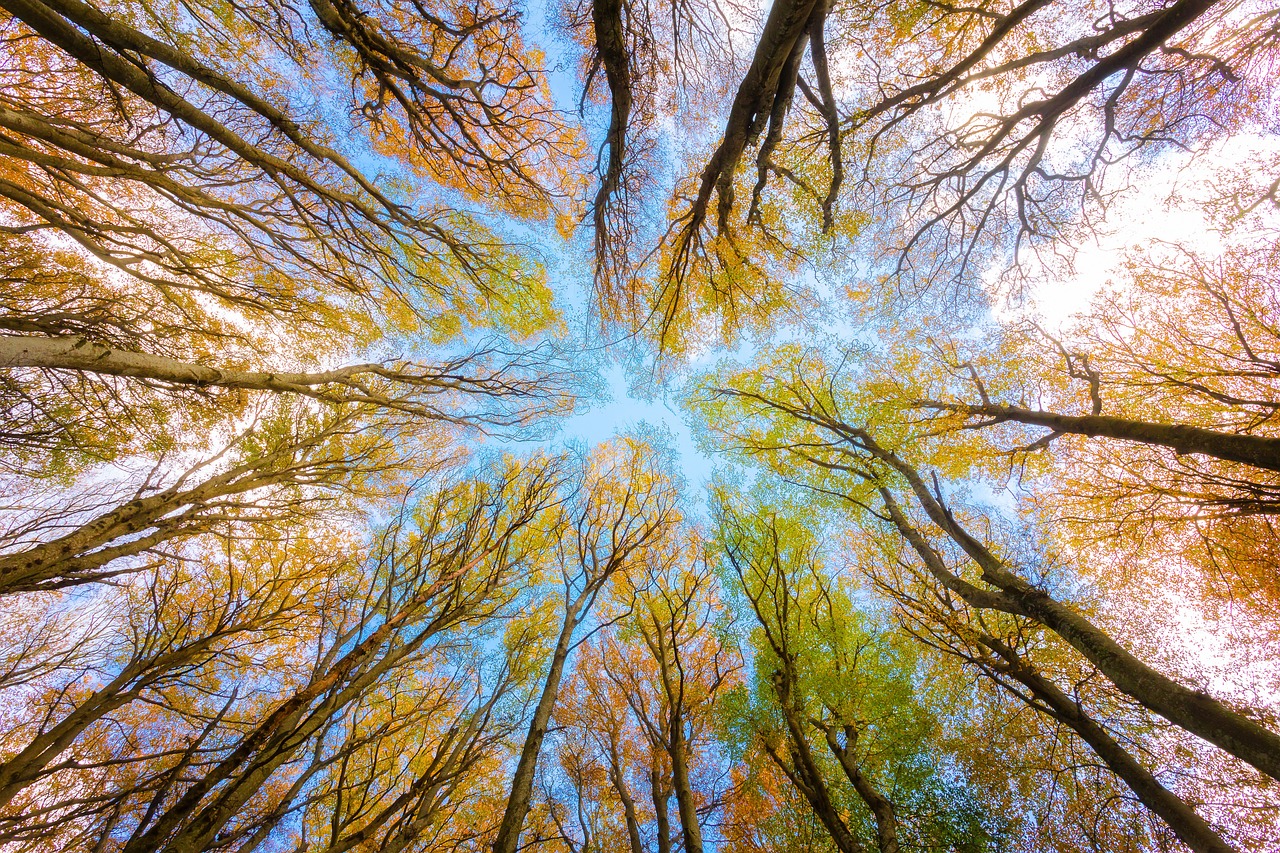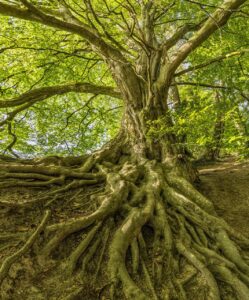Beech
Overview
The Beech plant, or Fagus, is a deciduous tree cherished for its ornamental value and known for its broad spread and striking bark. Thriving in temperate regions, it is a staple in woodlands and as hedging, with different species proving popular both in America and Europe for their beauty and adaptability. Beech trees require specific conditions to flourish and face threats like pests, but with proper care, they grace landscapes with their presence season after season.

Characteristics
Known for its smooth, gray bark, edible nuts, and broad, spreading canopy.
Region
Temperate regions of Eurasia and North America.
Natural Habitat
Forests
Cultivation
Prefers full sun to partial shade, requires well-drained, moist, acidic soil, and consistent moisture.
Uses and Benefits
Beech trees offer a myriad of uses and benefits that extend beyond their striking appearance. As a hedging option, they provide an elegant and effective way to define garden spaces or create privacy screens. When incorporated into woodland areas, beech trees contribute to a tranquil and enchanting atmosphere that captivates visitors2.
The European Beech (Fagus sylvatica) is particularly prized for its smooth, silvery bark, which adds a distinctive ornamental quality to any landscape3. Its American counterpart, the American Beech (Fagus grandifolia), is an ideal choice for spacious settings like parks, where it can truly showcase its impressive canopy and majestic stature4.
In addition to their aesthetic appeal, beech trees play a vital role in supporting local ecosystems. They provide essential habitat and food sources for a wide range of wildlife, including:
- Birds that rely on beech nuts as a key food source
- Small mammals that find shelter in the dense foliage
- Insects that thrive on the leaves and bark
By incorporating beech trees into your garden or landscape, you not only enhance the visual appeal of your space but also contribute to the well-being of the surrounding environment. These deciduous giants symbolize strength, longevity, and tranquility, making them a revered choice among plant enthusiasts and landscape designers alike.

Cultivation Tips
When diving into the cultivation of beech trees, remember that patience and a gentle hand go a long way. These majestic trees prefer well-drained, acidic soil that stays moist enough to nurture their shallow root systems5. Beeches are quite hardy, thriving in USDA zones 3A to 8B, but they do not fare well in urban environments5.
Regular pruning is essential for both aesthetics and the overall well-being of your beech trees. Keep these key points in mind when planning your pruning schedule:
- American Beech (Fagus grandifolia) has a sprawling growth habit1
- European Beech (Fagus sylvatica) can reach impressive heights3
- Prune strategically to maintain the desired shape and size of your trees
In regions affected by beech scale, it’s crucial to be vigilant. This pest can cause serious problems for American Beech trees5. Despite their grandeur, beeches are susceptible to this issue. Some tips to protect your trees include:
- Regularly inspect your beeches for signs of beech scale infestation
- Consult with local experts or extension services for region-specific advice
- Implement proactive care measures to maintain the health and vigor of your trees
By providing proper care and attention, you can enjoy the beauty and majesty of beech trees in your landscape for years to come.
Seasonal Considerations
When it comes to the seasonal care of beech trees, a few key considerations will help ensure their long-term health and beauty. In the spring, keep an eye out for any signs of disease or pest issues, particularly the troublesome beech scale that can plague American Beech (Fagus grandifolia). Regularly inspect the bark and leaves, and take swift action if you notice any concerns.5
As summer arrives, your beech trees will appreciate a layer of organic mulch around their shallow roots to help maintain consistent moisture levels in the soil. Be sure to leave some space between the mulch and the trunk to prevent any potential rot or disease issues.
Autumn is the ideal time to prune your beech trees, as this allows you to shape their growth while minimizing the risk of sap loss. Keep these key points in mind when pruning:
- Remove any dead, damaged, or crossing branches
- Maintain the tree’s natural shape and form
- Consider the mature size of your beech variety (American or European) when making pruning decisions13
During the winter months, your beech trees will enter dormancy, making it an opportune time to assess their overall structure and plan for any necessary pruning or training in the coming year. Additionally, applying a layer of organic matter around the base of the tree can help insulate the roots from extreme cold temperatures.
By following these seasonal care tips and remaining vigilant for any signs of stress or disease, you’ll be well on your way to cultivating healthy, vibrant beech trees that will grace your landscape for generations to come.

Issues and Troubleshooting
While Beech trees are a stunning addition to any garden, they can face challenges that require attentive care. The American Beech (Fagus grandifolia) is especially prone to infestations by the beech scale insect, a common problem in the northeastern United States5. These tiny pests can significantly impact the tree’s health and appearance, making regular monitoring essential for maintaining a thriving Beech.
To identify a potential beech scale infestation, keep an eye out for these warning signs:
- Thinning or sparse canopy
- Presence of honeydew, a sticky substance secreted by the insects
If you suspect your Beech is under attack, swift action is crucial. Treatment options include:
- Horticultural oils: These can effectively smother the insects and their eggs
- Insecticidal soaps: A targeted approach to eliminate the beech scale
However, the most effective strategy is early detection and prevention. By regularly inspecting your Beech and addressing issues promptly, you can minimize the impact of beech scale and ensure your tree remains a stunning focal point in your landscape.
History and Folklore
Beech trees, with their commanding presence, whisper tales from the past. Historically, these stately trees have shaded the lands of Europe and North America for centuries. Their smooth, silver-gray bark and grand stature have made them a symbol of strength and wisdom within many cultures.
In folklore, the Beech is often associated with knowledge—perhaps inspired by the fact that early writings were etched on thin slices of its bark. The ancient Germanic runes were often carved into beech wood tablets or “beechsticks” 1. This practice may have contributed to the tree’s reputation as a keeper of sacred knowledge and history.
While specifics of the folklore surrounding beech trees are sparse, it’s not hard to imagine these noble trees as silent witnesses to the unfolding of history, their leaves rustling with the secrets of ages gone by.
Engulfed in the mystique of ancient forests, beech trees have grown alongside humankind, staunchly enduring as civilizations rose and fell, offering a timeless link to our natural heritage. From the depths of primeval woods to the carefully tended gardens of modern times, the beech tree remains an enduring symbol of resilience and continuity in an ever-changing world.
References
1. The Spruce. “How to Grow and Care for American Beech.” https://www.thespruce.com/american-beech-tree-plant-profile-4775177
2. Wikipedia. “Beech.” https://en.wikipedia.org/wiki/Beech
3. The Spruce. “How to Grow and Care for European Beech.” https://www.thespruce.com/european-beech-growing-profile-3269265
4. The Morton Arboretum. “American beech.” https://mortonarb.org/plant-and-protect/trees-and-plants/american-beech/
5. EDIS. “Fagus grandifolia: American Beech.” https://edis.ifas.ufl.edu/publication/ST243
Image Credit: Polifoto
Image Credit: IlonaBurschl
Image Credit: FelixMittermeier
Nicolas Duval
Nicolas is a passionate advocate for nature and the art of wildcrafting. His dedication shines through in Wildcraftia, a website he meticulously crafted to serve as a haven for nature enthusiasts worldwide. Driven by a deep appreciation for nature’s connection to humanity, Nicolas embarked on his journey in 2011 with SmokableHerbs, a platform showcasing his love for nature’s bounty. Building upon this foundation, he established Smokably, a thriving online store offering premium herbs and blends to a global audience.
